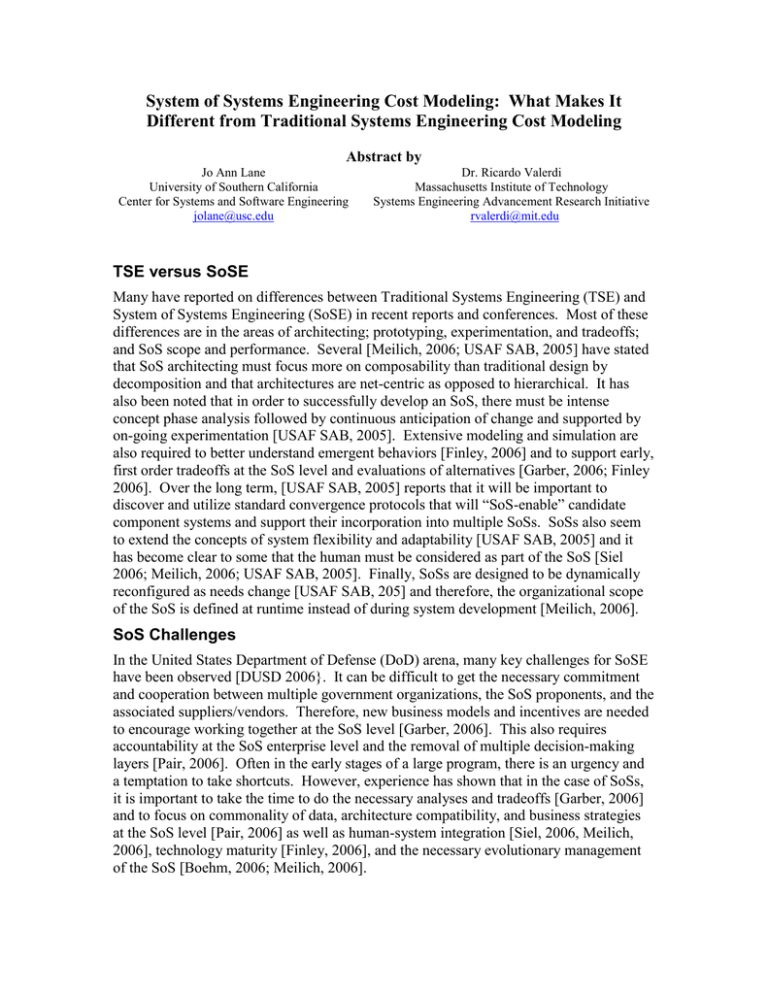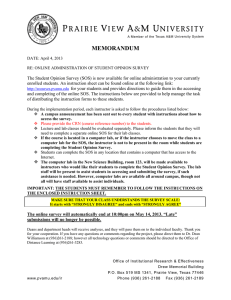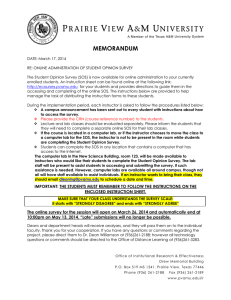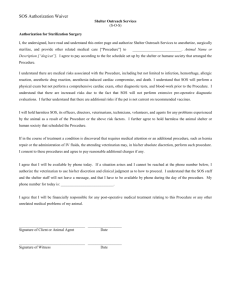System of Systems Engineering Cost Modeling: What Makes It
advertisement

System of Systems Engineering Cost Modeling: What Makes It Different from Traditional Systems Engineering Cost Modeling Abstract by Jo Ann Lane University of Southern California Center for Systems and Software Engineering jolane@usc.edu Dr. Ricardo Valerdi Massachusetts Institute of Technology Systems Engineering Advancement Research Initiative rvalerdi@mit.edu TSE versus SoSE Many have reported on differences between Traditional Systems Engineering (TSE) and System of Systems Engineering (SoSE) in recent reports and conferences. Most of these differences are in the areas of architecting; prototyping, experimentation, and tradeoffs; and SoS scope and performance. Several [Meilich, 2006; USAF SAB, 2005] have stated that SoS architecting must focus more on composability than traditional design by decomposition and that architectures are net-centric as opposed to hierarchical. It has also been noted that in order to successfully develop an SoS, there must be intense concept phase analysis followed by continuous anticipation of change and supported by on-going experimentation [USAF SAB, 2005]. Extensive modeling and simulation are also required to better understand emergent behaviors [Finley, 2006] and to support early, first order tradeoffs at the SoS level and evaluations of alternatives [Garber, 2006; Finley 2006]. Over the long term, [USAF SAB, 2005] reports that it will be important to discover and utilize standard convergence protocols that will “SoS-enable” candidate component systems and support their incorporation into multiple SoSs. SoSs also seem to extend the concepts of system flexibility and adaptability [USAF SAB, 2005] and it has become clear to some that the human must be considered as part of the SoS [Siel 2006; Meilich, 2006; USAF SAB, 2005]. Finally, SoSs are designed to be dynamically reconfigured as needs change [USAF SAB, 205] and therefore, the organizational scope of the SoS is defined at runtime instead of during system development [Meilich, 2006]. SoS Challenges In the United States Department of Defense (DoD) arena, many key challenges for SoSE have been observed [DUSD 2006}. It can be difficult to get the necessary commitment and cooperation between multiple government organizations, the SoS proponents, and the associated suppliers/vendors. Therefore, new business models and incentives are needed to encourage working together at the SoS level [Garber, 2006]. This also requires accountability at the SoS enterprise level and the removal of multiple decision-making layers [Pair, 2006]. Often in the early stages of a large program, there is an urgency and a temptation to take shortcuts. However, experience has shown that in the case of SoSs, it is important to take the time to do the necessary analyses and tradeoffs [Garber, 2006] and to focus on commonality of data, architecture compatibility, and business strategies at the SoS level [Pair, 2006] as well as human-system integration [Siel, 2006, Meilich, 2006], technology maturity [Finley, 2006], and the necessary evolutionary management of the SoS [Boehm, 2006; Meilich, 2006]. Cost Model Implications The question remains, however, as to how much, if at all, do these identified differences impact the associated systems engineering effort and schedule. Are these differences significant enough to cause us to plan development efforts differently, perform additional or different activities, or to allocate resources differently? Or is this just a natural evolution of the traditional systems engineering process that still falls within the typical systems engineering effort profiles that are the basis for current TSE cost estimation [Valerdi, 2005]? This presentation will outline the results of detailed analysis and comparisons of TSE and SoSE key issues and dive deeper into the attributes that distinguish them through an analysis of existing and proposed cost drivers. Finally, implications for cost models will be discussed in light of the issues presented. References Boehm, B. (2006); “Some Future Trends and Implications for Systems and Software Engineering Processes”, Systems Engineering 9(1), pp. 1-19. Deputy Under Secretary of Defense (2006); “System of Systems Systems Engineering Guide: Considerations for Systems Engineering in a System of Systems Environment. Vers. 0.9, www.acq.osd.mil/se/publications. htm. Finley, J. (2006); “Keynote Address”, Proceedings of the 2nd Annual System of Systems Engineering Conference, Hoboken, NJ. Garber, V. (2006); “Acquiring Revolutionary Capabilities”, Proceedings of the 2nd Annual System of Systems Engineering Conference, Fort Belvoir, VA. Lane, J (2006). "COSOSIMO Parameter Definitions", USC-CSE-TR-2006-606. Los Angeles, CA: University of Southern California Center for Systems and Software Engineering. Meilich, A. (2006); “System of Systems Engineering (SoSE) and Architecture Challenges in a Net Centric Environment”, Proceedings of the 2nd Annual System of Systems Engineering Conference, Fort Belvoir, VA. Pair, C. (2006); “Defense Business Transformation”, Proceedings of the 2nd Annual System of Systems Engineering Conference, Fort Belvoir, VA.. Siel, C. (2006); “Keynote Presentation”, Proceedings of the 2nd Annual System of Systems Engineering Conference, Fort Belvoir, VA. United States Air Force Scientific Advisory Board (2005); Report on System-of-Systems Engineering for Air Force Capability Development; Public Release SAB-TR-05-04 Valerdi, R. (2005); Constructive Systems Engineering Cost Model. PhD. Dissertation, University of Southern California.





